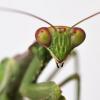I am researching a few species, trying to figure out which to start with. I am having trouble finding a caresheet about Formica Argentea - anyone know of one?
- Formiculture.com
- Forums
- Gallery
- Members
- Member Map
- Chat

I am researching a few species, trying to figure out which to start with. I am having trouble finding a caresheet about Formica Argentea - anyone know of one?
Scientific name: Formica fusca
Common Name: In the UK, it is often referred to as "helper" or "slave ants."
Distribution: Can be found in many countries, but primarily in the U.S. and Canada. Quite common throughout some of the continent of Europe as well and further.
Queen size: 12 mm
Worker size: 4-8 mm
Natural Habitat: Formica fusca can be found nesting in open fields and frequently under rocks and logs. However it tends to prefer forested area's.
Circadian Activity: This species is generally active during the day, but if the conditions are right they will forage at night.
Mating Flight: Nuptial Flights occur June to August. Main flights occur during late July-August.
Queen Founding Method: Fully Claustral. (No food needed until first workers.)
Monogyne or Polygyne: "It is most accurate to say that F. fusca colonies may be either monogyne or polygyne. Colonies probably most often start out monogyne. In the lab, when one puts two young queens together, they raise a first brood of workers together, but when the workers emerge, one queen almost always kills the other."
-James C. Trager
Average time from egg to worker: 4-6 weeks in optimal temperature.
Recommended Temperature: Preferred temperature during “summer” is around 21-26 degrees celsius.(70-80 degrees fahrenheit) And during the winter about 8 degrees celisius. (46 Degrees fahrenheit)
Recommended Humidity: 50%-60% They need a moist environment to thrive.
Preferred Foods: Most non-harmful fresh insects, Honey, Sugar/water, Boiled egg, Cooked Chicken, Syrup/water with whey protein powder, and Jello.
(This species does have a social stomach.)
Hibernation Details: Colonies should be left in hibernation for 4-5 months at 8 degrees celsius.
Escape Barrier Methods: Olive oil and fluon are both effective.
Difficulty rating: This is a easy species to keep, however founding the colony can be difficult as they often eat their brood if they are disturbed.
Bite and/or Sting rating: Bites and can spray formic acid, but can't cause any pain.
Edited by DrygonKing, February 4 2019 - 7:21 PM.
0 members, 1 guests, 0 anonymous users